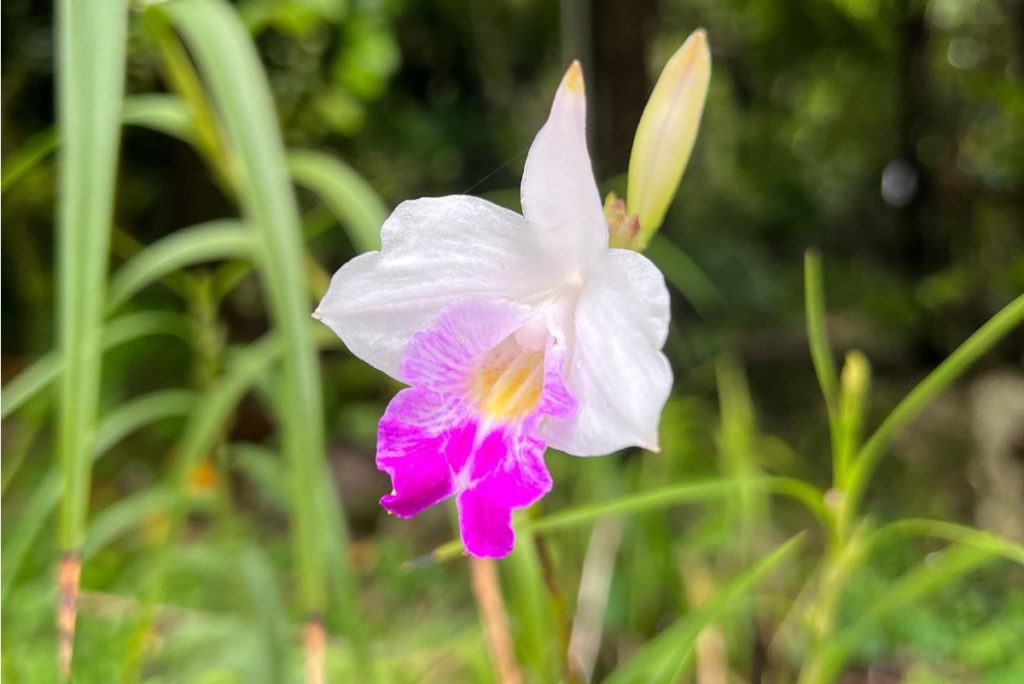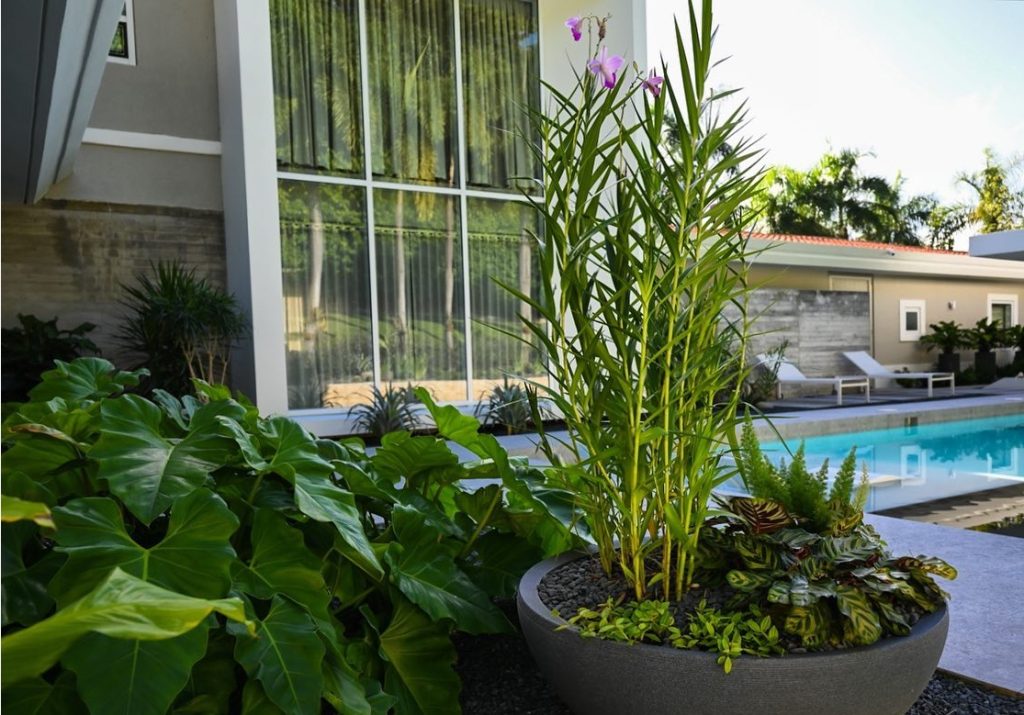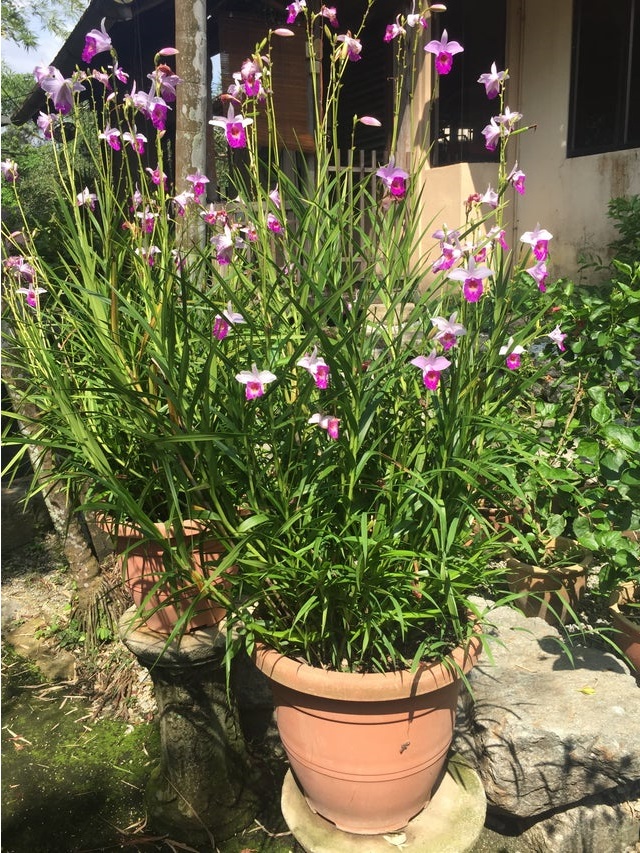Are you looking to create a tropical oasis in your home? Bamboo orchids are the perfect way to bring a little extra beauty and charm into your space. In this guide, we’ll walk you through all of the requirements for bamboo orchid care, as well as common issues that arise when taking care of them. With just a bit of knowledge and some proper love and attention, you can ensure that these gorgeous plants thrive in your own slice of paradise!

Contents
Bamboo Orchid Care Requirements
Light Requirements
Bamboo orchids (Arundina graminifolia) need plenty of light, but not too much, or they can get sunburned. To make sure your bamboo orchid is getting the right amount of light, you should provide it with more than 6 hours of sunlight per day and a location that receives unobstructed solar radiation. If you cannot give your plant natural sunlight all day, supplement it with artificial lights in order to promote faster, healthier growth.
When placed outdoors in high-temperature environments during summer, be sure to take preventive measures against sunburn as bamboo orchids have limited tolerance to intense sunlight. To protect them from light deficiency in winter or less sunny spaces, consider artificial lighting options for optimal growth. With proper care and monitoring of light requirements for your bamboo orchid, you can ensure its long-term health and beauty!

Water Requirements
You need to ensure your plant is getting adequate water, as it can only tolerate short periods of drought. Watering techniques include pouring from above or filling a tray with water and letting the soil absorb it from below. The frequency should be once per week in summer and once every 10 days in fall/winter. Mist when the weather is dry to keep the air moist.
Use a neutral pH for your water and avoid overwatering or underwatering as either can lead to health issues such as yellowing leaves, wilting, root rot, etc. Make sure to use a watering can with a long spout for convenience and reduce exertion. Ensure you discard any excess water left in trays after watering so that your bamboo orchid isn’t sitting in it.
Soil Requirements
Providing the right soil for your bamboo orchid is essential for its health, as it needs a specialized growing environment. The best potting mixture for a bamboo orchid consists of water moss, wood chips, coconut shells, volcanic stones, and perlite. This blend provides good drainage and air circulation while allowing the roots to stay moist but not soggy. You can also buy special bamboo orchid substrate from stores that cater to gardeners. Whichever you choose, the important thing is to make sure the soil has enough nutrients and contains the right amount of moisture for your particular plant species.
When potting your bamboo orchid in its new home, make sure there are enough holes at the bottom for adequate drainage. If needed, add extra soil mix around the root ball so that it fits snugly in its container and doesn’t move around too much when watered. With proper care and attention to detail regarding its soil requirements, you’ll enjoy beautiful blooms from your bamboo orchid soon enough!
Fertilizer Requirements
Fertilizing your Bamboo orchid correctly is essential for encouraging healthy growth and stunning blooms. To ensure proper nutrition, start with a nitrogen-rich fertilizer (N-P-K = 30-10-10) every 10 days during spring. When summer arrives, switch to a balanced fertilizer (N-P-K = 20-20-20). You can also use phosphorus-rich fertilizers to promote blooming in fall. Whether you choose liquid or powdered fertilizers, organic materials like compost and manure are also great ways to improve soil quality.
The most important time for fertilization is throughout the active growth phase of the Bamboo orchid from spring to fall. Make sure not to overfertilize as it can cause root burn; begin by fertilizing once per month during spring and reduce the rate as fall approaches. This will help your Bamboo orchid look great, stay healthy, and produce beautiful blooms that you’ll enjoy all season long!
Temperature and Humidity

Optimal temperatures for Bamboo orchid range from 64-82°F (18-28°C) during the day, and 59-64°F (15-18°C) at night, while humidity should stay between 50-70%. To ensure your plant receives proper care, you must pay close attention to its environmental conditions. Temperature regulation is key; if temperatures exceed 95°F (35°C), growth will slow down and leaves may begin to wilt. In chillier seasons, keep the temperature above 68°F (20°C).
During winter months, it is recommended to bring Bamboo orchids indoors and maintain temperatures above 77°F (25°C). Similarly, humidity management is also necessary – if leaf tips are withered it’s a sign that the atmosphere is too dry. Use a humidifier or spray bottle to increase air moisture levels and prevent wilting leaves. Proper maintenance of environmental conditions helps ensure your bamboo orchid can thrive in its balmy native environment!
Pruning Requirements
Pruning is essential for keeping your plant healthy and blooming. Wilted bamboo orchid flowers should be pruned promptly after they have bloomed in order to help the plant conserve its energy and nutrients so it can continue to bloom. In addition, you should also trim away any withered or diseased leaves as soon as possible to improve air circulation and reduce the risk of pest infestations or disease.
Leaf pruning helps maintain a healthy foliage structure while flower pruning will keep your plant producing beautiful blooms throughout the season. Pruning also serves an important role in pest control by helping to get rid of weak points that may be vulnerable to unwanted insects or diseases.
Potting and Repotting Requirements

When repotting a bamboo orchid, it’s important to select a pot that is only 1 inch taller than the (pseudo)bulb of the plant. A larger pot can cause waterlogging and root rot, so make sure to choose wisely when selecting a container for your orchid. It is recommended to transplant your bamboo orchid in late spring to early summer as this timing encourages healthy growth and blooms.
Start by preparing a hole in the soil of your new pot, then carefully place the root ball into it. Backfill with soil and gently press down around the edges of the plant. Water lightly and keep an eye on any drooping leaves as they could indicate overwatering. Finally, trim off any damaged stems and foliage before covering them with sphagnum moss if needed in warmer climates. With these potting techniques, you’ll be able to ensure that your bamboo orchid will thrive for years!
Related Post:
What Do Orchids Smell Like?
How To Propagate Bamboo Orchids
If you’re looking to propagate a bamboo orchid, there are two main methods: division and cuttings. For root division, carefully dig up the bamboo orchid with its roots intact and divide the roots into several clusters from the base. Be sure to use clean tools and disinfect any wounds with fungicide before potting in containers. To help keep these new roots growing, spray them regularly with water.
For propagation by cuttings, select a healthy stem before it flowers and remove any leaves. Cut it into 2-node pieces that can be directly inserted into potting media for rooting and sprouting in approximately 2-3 months. Alternatively, lay the entire stem on top of a moist substrate and make your cuts once it has rooted and sprouted. Whichever method you choose for propagating your bamboo orchid, remember to monitor for pests so they don’t impact growth success; take preventative pest control measures as needed.
Common Issues With Bamboo Orchids
You may have heard that bamboo orchids are a low-maintenance plant, but there are still some common issues you should be aware of. Brown spots can appear if your plant is overwatered, scars can form due to mechanical damage, and leaf beetles may infest the leaves. Yellow and dry leaves can indicate both over-watering and under-watering, so it’s important to monitor your plant closely.
Brown spot
Brown spot is a common fungal disease that can cause discolored spots on the foliage of plants, including bamboo orchids. It’s important to take preventive measures to protect your plants from this infection and its associated damage. The best way to prevent brown spots is to keep the environment around your plants dry and provide adequate air circulation. Additionally, avoid overwatering as too much moisture encourages the growth of fungal pathogens.
If an infection does occur, you should apply fungicides according to label instructions and remove any affected leaves or stems from the plant. Depending on the severity of the infection, additional treatment options may be necessary for full recovery. To sum up, understanding how to prevent and treat brown spots is essential for keeping your bamboo orchid healthy and beautiful!
Scars
Scars are a natural response to wounds and can occur on stems when a leaf or bud has been lost. They form due to scraping by people or pets, insect infestations, diseases like fungus or bacteria, sunburn caused by overexposure to sunlight, and other environmental conditions. To prevent scars from appearing on your bamboo orchid stems, practice proper care techniques such as regularly checking for pests and diseases and providing adequate shade.
If you do find any scarring, it is important to treat the underlying issue first before attempting scar removal. For instance, if an insect infestation is causing the problem then you should use pest control methods rather than trying to remove the scar directly. In most cases though, scars will heal naturally over time with no intervention necessary.
Leaf beetles
Leaf beetles can cause extensive damage to plants if left uncontrolled. These pests feed on the leaves, flowers, stems, roots, and fruits of different plants. They are active in spring and summer and can fly from one plant to another easily. To prevent infestations of leaf beetles, natural predators like ladybugs or lacewings should be encouraged in the garden through organic methods such as planting beneficial insectary plants or using companion planting techniques.
If an infestation does occur, there are several organic control methods that can be used including spraying with neem oil or releasing beneficial nematodes in affected areas. Taking preventive measures is key to avoiding any serious damage caused by leaf beetles on bamboo orchids.
Yellow and Dry Leaves
Yellowing and drying of leaves is a natural process that happens when plants reach the end of their life cycle. To prevent yellowing, make sure to give your bamboo orchid enough water, sunlight, and fertilizer. If you notice leaves beginning to dry out, check for signs of pests like leaf beetles which can cause damage to the plant’s foliage. If no pests are present, it may be caused by too much light or heat stress.
Treat yellow leaves by providing extra humidity in the air and additional water if needed. Be sure to inspect the roots and soil for any potential issues such as root rot or poor drainage before attempting any corrective measures. With proper care and regular maintenance, you can help keep your plant healthy and vibrant!
Conclusion
You now have everything you need to successfully care for your bamboo orchid. With the right light, water, soil, temperature and humidity levels, and regular pruning and repotting, your bamboo orchid can thrive! Propagating is also a great way to increase the number of plants in your home. If you follow these simple steps, will you be able to keep your bamboo orchid healthy?
